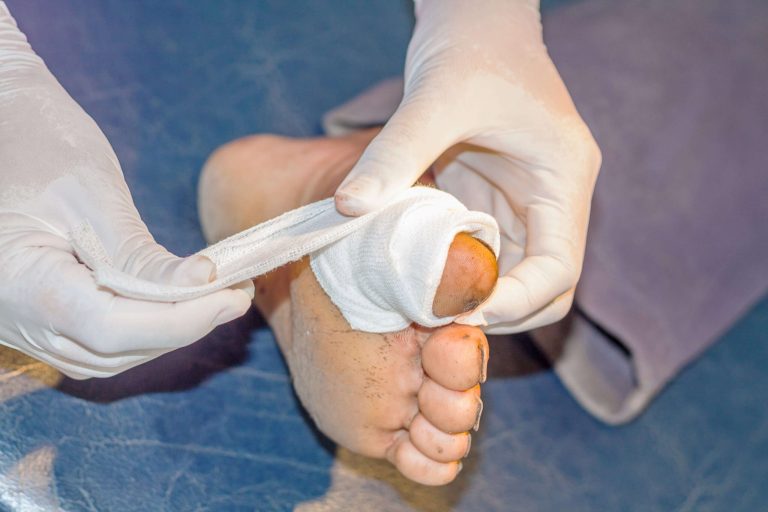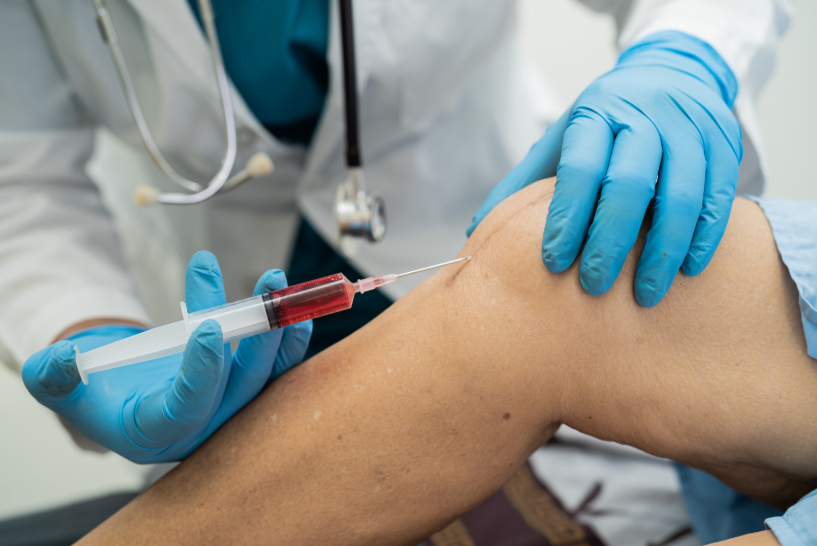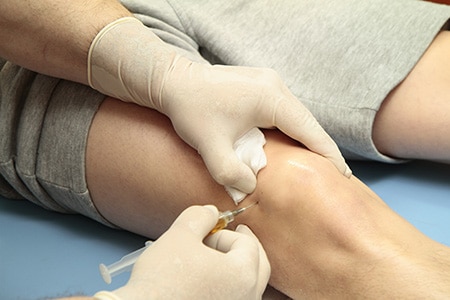Managing non-healing foot wounds in diabetes requires an integrative approach that targets underlying causes such as poor circulation, infection risks, and reduced mobility. At Tec Orthopedics, our focus is on providing comprehensive care that addresses these challenges head-on, ensuring optimal outcomes for our patients. This article delves into the specialized realm of Orthopedic Treatment for Non-Healing Foot Wounds in Diabetes, detailing the importance of infection management, tissue preservation, and the restoration of mobility.
Understanding Non-Healing Foot Wounds in Diabetes
Diabetes is known for its myriad complications, among which non-healing foot wounds are particularly concerning. Individuals with diabetes often face issues related to compromised blood flow and nerve damage, which make wound healing a prolonged and challenging process. When these wounds fail to heal, the risk of infections and complications increases significantly.
Non-healing foot wounds are typically characterized by the inability of the skin and underlying tissues to regenerate effectively. Poor circulation, due in part to diabetes-related vascular complications, disrupts the natural healing cascade. Moreover, the diminished sensation in the extremities—another common diabetic complication—often means that injuries go unnoticed until they have progressed to more severe stages.
This is where Orthopedic Treatment for Non-Healing Foot Wounds in Diabetes plays a crucial role. By integrating targeted interventions, healthcare providers can significantly alter the healing trajectory, reducing the risk of amputation and improving the overall quality of life.
The Critical Role of Orthopedic Interventions
The effectiveness of orthopedic treatment in diabetic foot care lies in its comprehensive approach. Rather than merely addressing the wound superficially, orthopedic specialists consider the entire musculoskeletal system. The treatment focuses on three key components:
Infection Management: The primary barrier to healing in diabetic wounds is the risk of infection. Bacteria can thrive in the moist environment of an open wound, leading to systemic issues if not promptly addressed. Orthopedic treatment involves early detection of infections through advanced diagnostic tools and immediate intervention using antibiotics or surgical debridement when necessary.
Tissue Preservation: Preserving healthy tissue is critical to maintaining a foundation for new tissue growth. Techniques used in orthopedic treatment include precise surgical methods that minimize tissue loss and advanced therapies that promote tissue regeneration. By preserving viable tissue, the wound environment becomes more conducive to healing, reducing long-term complications.
Enhanced Mobility: Reduced mobility, often caused by pain and functional impairments, creates a vicious cycle in diabetic patients, as immobility further deteriorates overall health and delays recovery. Orthopedic interventions aim to restore mobility through physical therapy, custom orthotics, and, in some cases, surgical correction of structural abnormalities. Enhanced mobility not only facilitates wound healing but also promotes independence and an improved quality of life.
Together, these components form the backbone of modern diabetic foot care and underscore the essence of Orthopedic Treatment for Non-Healing Foot Wounds in Diabetes.
Deep Dive: Infection Management Strategies
A thorough understanding of infection risks is essential to effective diabetic wound care. Infections in non-healing foot wounds can escalate quickly, making early detection and treatment vital. Here’s a closer look at our infection management strategies:
Why Infection is a Major Concern: Diabetes compromises the body’s immune response, making it more challenging to fight off infections. When coupled with poor circulation, the delivery of immune cells to the wound site is hampered, leaving infections unchecked.
Advanced Diagnostic Tools: Our orthopedic team employs state-of-the-art diagnostic tools, including digital imaging and laboratory tests, to assess the extent of infection. Early diagnostic indicators such as elevated inflammatory markers enable prompt intervention.
Targeted Treatment Approaches: Treatment typically involves a combination of systemic antibiotics and localized care strategies. In severe cases, surgical debridement—the careful removal of infected tissue—may be necessary to create a healthy environment for new growth. The integration of these methods ensures that the infection is controlled before it can cause significant tissue damage.
Multidisciplinary Collaboration: Effective infection management often requires collaboration among multiple specialties. Our team works closely with podiatrists, endocrinologists, and infectious disease experts to formulate a comprehensive treatment plan tailored to each patient’s needs.
Tissue Preservation Techniques and Their Benefits
Preserving healthy tissue is at the forefront of our orthopedic approach. Tissue preservation not only supports wound healing but also lays the groundwork for future functional improvements. Here are some of the techniques and their associated benefits:
Minimally Invasive Surgical Procedures: By utilizing minimally invasive procedures, our orthopedic surgeons can minimize collateral damage to surrounding tissues. These techniques are designed to remove only the necrotic (dead) tissue while preserving as much healthy tissue as possible, thereby promoting natural regeneration and reducing healing time.
Innovative Therapies: Novel therapies such as bioengineered tissue matrices, growth factor treatments, and hyperbaric oxygen therapy have shown promising results in improving tissue viability. These methods work by stimulating cell proliferation and enhancing the wound’s natural healing processes.
Long-Term Patient Outcomes: Preservation of healthy tissue is directly linked to better long-term outcomes, including reduced pain, lower risk of re-ulceration, and improved functional mobility. Patients who benefit from such tissue-preserving interventions often experience quicker recoveries and enjoy a better overall quality of life.
By focusing on these advanced techniques, our Orthopedic Treatment for Non-Healing Foot Wounds in Diabetes not only addresses the immediate wound care challenges but also provides a robust platform for future rehabilitation and strength building.
Enhancing Mobility and Quality of Life
Reduced mobility can severely impact a patient’s daily activities and overall health, especially in individuals with diabetes. Restoring function and independence is a key objective of orthopedic treatment. Here’s how we help patients regain mobility:
Identifying Mobility Barriers: Understanding the biomechanical factors contributing to reduced mobility is essential. Orthopedic assessments often include gait analysis, posture evaluation, and the review of joint integrity. These assessments identify structural issues that may hinder movement and provide a clear pathway for corrective intervention.
Custom Rehabilitation Programs: Once barriers to mobility are identified, a personalized rehabilitation program is designed. Physical therapists specializing in diabetic foot care work with patients to restore strength, balance, and flexibility. The program may include exercises, stretches, and the use of assistive devices where necessary.
Orthotic Support: Custom orthotics can play a significant role in distributing pressure evenly across the foot, reducing the risk of further injury while enhancing stability during walking. These devices are tailored to individual needs and are a critical component of the overall treatment plan.
Success Stories and Patient Testimonials: Many patients have experienced transformative results with our orthopedic approach. Case studies often highlight significant improvements in mobility, reduction in pain, and an overall enhancement in quality of life. These real-life examples build confidence in the efficacy of our treatment protocols and underscore the importance of early and sustained intervention.
By improving mobility, our methods offer not just physical benefits but also contribute to better mental health and reduced dependency on medical interventions over time.
A Path Forward in Diabetic Foot Care
Non-healing foot wounds in diabetes represent a significant healthcare challenge, but modern orthopedic interventions offer a promising path forward. With a focus on infection management, tissue preservation, and enhanced mobility, our treatment strategies are designed to restore health, functionality, and quality of life.
By adopting an integrative approach that leverages the latest research and cutting-edge techniques, patients can expect:
- Reduced risk of infection-related complications
- Preservation of tissue health, paving the way for natural healing
- Improved mobility and independence
For individuals and caregivers seeking effective solutions to diabetic foot wounds, understanding and embracing the principles of Orthopedic Treatment for Non-Healing Foot Wounds in Diabetes can make a substantial difference. The journey begins with awareness and proactive intervention. Every patient is unique, and tailored treatments ensure that no one is left behind in the pursuit of lasting recovery.
Takeaway
Taking proactive measures when confronted with diabetic foot wounds can be life-changing. The integrative model of Orthopedic Treatment for Non-Healing Foot Wounds in Diabetes emphasizes early detection, tailored care, and a strong support network through multidisciplinary collaboration. If you or a loved one is struggling with non-healing foot wounds, consider reaching out to a specialized orthopedic care provider to explore your options and take the first step toward a healthier, more active life.
By staying informed and actively participating in your care, you can significantly influence your recovery trajectory. Every step taken towards better management of diabetic foot wounds is a step toward a brighter, more independent future.






